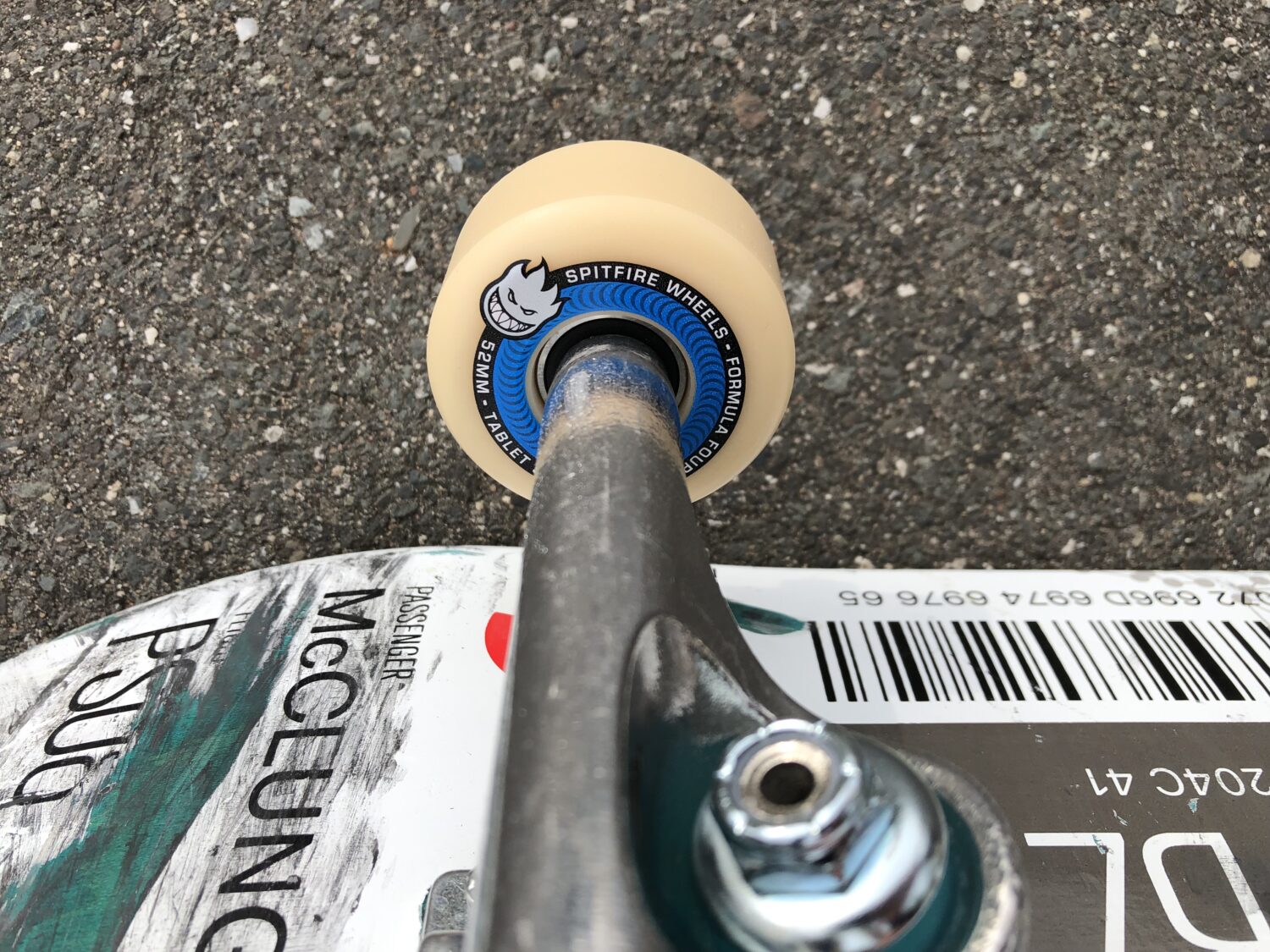Skateboard wheels are critical skateboard hardware that often gets overlooked. It’s actually more essential to get used to your truck-wheel setup, since decks wear out faster than wheels and trucks. But when it comes choosing the right wheels, there seems to be endless options of brands, sizes, shapes, hardness, and colors to choose from. With that said, we’re here to provide an overview on the different characteristics to pay attention to when choosing the right set of wheels.
When it comes to skateboard wheel brands, Spitfire has undoubtedly held it down since day one. As one of the most dominant wheel brands in the market, Spitfire has seasoned experience in developing the best wheel formulas that can handle heavy shredding. We used their portfolio of wheels as a reference for this buying guide and also tested Spitfire’s newest wheel additions over a span of two months, which included the Spitfire Tablet Shape Formula Four 52mm in two different durometers, 99 Duros and 101Duros.
The material composite that the wheel is made from is the important and currently the industry standard is the use of a plastic polymer called polyurethane. The advantage of using polyurethane as the main composite is the ability to control the variation of hardness; this means with different blends, the wheels can be fine-tuned to achieve different skateboarding performance properties like slide ability, response, and durability. Spitfire Tablet wheels are made out of a special polyurethane which Spitfire has termed Formula four.
The choice of material correlates with the durability and lifespan of the wheel. The durability of a wheel can be evaluated with two aspects – flatspot resistance and it’s ability not to chunk out. Flatspots are related to the slide-ability of a wheel, the better it slides the less risk for flatspots because there is less friction between wheels and ground. The Spitfire Tablets did not show any flatspots in our two month test because they have very good slide characteristics on flatground due to the Formula Four material. The second aspect to keep in mind when testing durability performance, is how the inside of the wheel holds up when grinding. Usually when grinding on ledges with sharp metal edges (e.g. crooked grinds), the inside of the wheel will show cuts and chunks. However, the Spitfire Tablets did not show signs of wear except for a couple marks.
The Spitfire Tablets come in two different hardness grades, which are termed 99Duro and 101Duro. The advantage of the harder 101Duros is that they feel very smooth and fast on nice even grounds ground (e.g. skateparks), but on rough grounds the wheels feel more shock-direct because they can’t dampen out the crusty parts of a chunky ground. The softer 99Duros Tablets make a slower impression on smooth grounds, but have a noticeably improved feeling on rough grounds because they have more margin for cushioning over the uneven bits of the ground.
The conical shape of a wheel is another characteristic that’s often brushed aside. There is a clear difference in performance when it comes to a wheel’s riding surface and width. The riding surface has direct contact with the ground, while the width is more relevant in terms of sliding and grinding. Compared to other Spitfire shapes, the Spitfire Tablets have an average riding surface but a rather skinny width. The 52mm Tablets have a width of 29mm and riding surface of 20mm, where as the 52mm Radials have a width of 32.5mm and a riding surface of 19mm.
The Spitfire Tablets feel like skinny wheels with a wide riding surface; they don’t feel as slick as a regular slim shaped wheel, because the riding surface of the wheel provides enough friction with the ground. This is especially the case on smooth ground, where a larger majority of the wheel’s surface area is touching the ground, which increases the drag. On crusty grounds the surface area helps to ride over the crusty bits and give a smoother ride.
Different shapes also result in a weight difference. A Tablet wheel weighs 53 grams, where as a Radial wheel weighs 56 grams. No doubt, the difference is not significant when it comes to just one wheel, but if you sum up all four wheels, in combination with lightweight trucks, the difference is noticeable.
The shape of a wheel comes into factor for slides and grinds, as it provides a lock in. The Spitfire tablets have a straight, edge-like shape so the lock-in is very good. Usually on slides, there is more friction with a straight wheel since the whole side of the straight edge wheel can slow you down. There slightly noticeable slower slide characteristics with the Tablets but the Formula Four composite helps.
The last aspect of a critical component of a wheel is its size. The size of the wheels influence the pop. A 54 mm wheel makes the whole board higher from the ground, which means there is more pressure needed to push down on the tail or nose to get the pop needed, compared to a 50 mm wheels. Smaller wheels make the board closer to the ground for a more responsive and quick pop but also result in less lock-in. We tested the Spitfire Tablets in 52mm, however they are also available from size 51-55 mm.
The Spitfire Tablets are good for a smooth ride, they have characteristics of wide wheels with a big riding surface but still offer an exceptionally good lock-in due to its stright shape.

